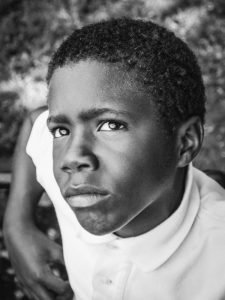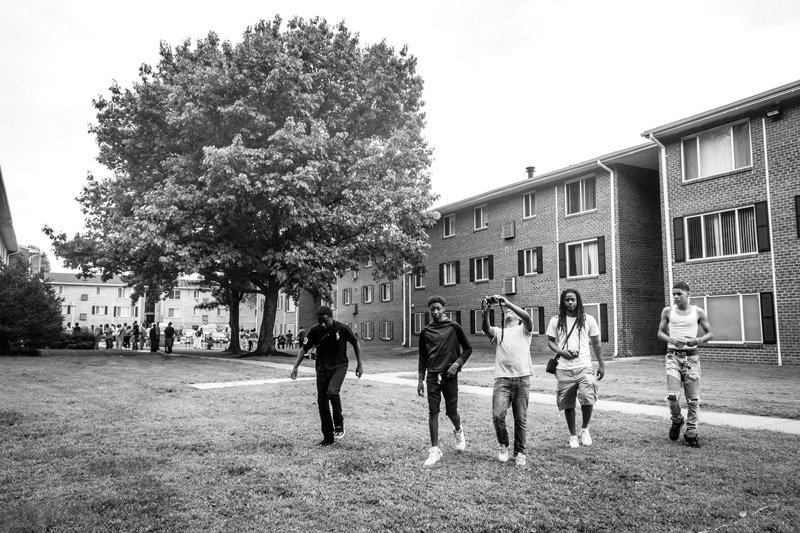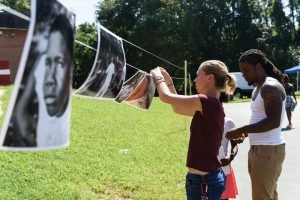+ By Desiree Smith-Daughety
Slow down. Look carefully at what’s around you.
Kirsten Elstner, founder and executive director of VisionWorkshops, says that is the point of her youth photography workshops—to show issues through photography and writing. “Working with young people is where my heart is because they’re the future of our world.”
 Elstner is a photographer who worked primarily for the New York Times, as well as with the International Red Cross, and as a photography assistant at National Geographic. She and some fellow photographers wanted to put cameras into the hands of the people they were trying to document and let them tell their own stories. In 2001, Elstner launched the organization, backed by a board of directors and with the help of instructors to run the various workshops. The last part of their mission statement illustrates part of the draw for those involved: “We are catalysts of hope, inspiration, and expression for youth who need encouragement. We see the results of our efforts contributing to a more peaceful and tolerant world.”
Elstner is a photographer who worked primarily for the New York Times, as well as with the International Red Cross, and as a photography assistant at National Geographic. She and some fellow photographers wanted to put cameras into the hands of the people they were trying to document and let them tell their own stories. In 2001, Elstner launched the organization, backed by a board of directors and with the help of instructors to run the various workshops. The last part of their mission statement illustrates part of the draw for those involved: “We are catalysts of hope, inspiration, and expression for youth who need encouragement. We see the results of our efforts contributing to a more peaceful and tolerant world.”
Slow down, look carefully. Observe the following web of connections. VisionWorkshops runs programs in partnership with various local, regional, and international partners, from Anne Arundel County Public Schools to the Refugee Youth Project in Baltimore, to collaborations around the world through National Geographic Photo Camp, places from Kenya to Jordan to U.S. locations including Native American reservations and inner-city neighborhoods. The nonprofit organization has been a community partner of Maryland Hall for the Creative Arts since around its inception and reaches out to its target audience of at-risk children and underserved communities. The Carol M. Jacobsohn Foundation supports the local and regional workshops, and other local grants help with up to 10 week-long or semester-long workshops per year. Its Crossing Borders program has an ongoing partnership with Laura Brino of Jóvenes Artistas, a nonprofit organization that provides arts experiences for youth facing adversity, such as Spanish-speaking students in Bates and Annapolis high schools.
A recent workshop that has cross connections stitched through it, was coming up, spearheaded by local photographer Allison Zaucha and organized by Deonte Ward, a local community leader and advocate.
Zaucha learned of VisionWorkshops through photographer Alison Harbaugh, and met Elstner while shooting a feature on Maryland Hall for the Creative Arts for this magazine. “I thought the organization would be a perfect fit [for me],” says Zaucha, “as I’m passionate about social issues, working in communities, and mentoring youth.”
She came to know Ward through a project she was working on in Newtowne 20, a public housing neighborhood located in Annapolis, and through Downtown Hope, a local church. “He’s an inspiration for everyone in the neighborhood,” says Zaucha.“When nonprofits come into neighborhoods, it’s important to partner with people in the communities—that’s what [VisionWorks] does.” Zaucha knew immediately that she wanted to work with Ward, and approached him and Elstner about working together. Moreover, Elstner already knew Ward; he was a former student of hers who had participated in a VisionWorkshops program at Maryland Hall, so she was thrilled to see things come full circle.
In addition to his job as an electrician, Ward is an entrepreneur who runs a few nonprofit programs geared toward teenagers and youth, including B.L.A.C.K. (Becoming Leaders Acquiring Critical Knowledge), which helps young black males develop a success pathway. Remembering his own experience with the VisionWorkshops program, Ward says, “I thought it was pretty cool, doing the program from seventh grade to eighth grade. I liked the whole vision behind doing one in the community, finding good themes with people and lifestyles, not the images typically given of young black men in the community. Through pictures, they could show the lifestyle they live and what they do as a day-in-the-life versus what’s put out in the news.”
Ward notes that photography is not something normally done in his neighborhood as a hobby. And at first, there was some mild resistance. “Typically, a group of teenaged boys are more focused on what’s cool. They looked at it as exposing people’s lives. We had to help them understand this was not to expose, but rather, to shed light.”
 Demonstrating why it’s important to partner with people in these communities, Ward provides a thoughtful analysis. “We don’t have as many opportunities in our community. When I was coming up, we had programs—my mom made sure I was in some kind of program all the time. A lot of funding has been taken away from those, so being able to bring programs directly to the community has an impact, rather than just having a select few who get to go. For me, it was deep to be able to bring this to my community. Super humbling.” Ward kept a full schedule as a youth (just as he continues to do), participating in afterschool programs, the VisionWorkshops photography program, and science and math clubs that would lead into summer programs and camps, as well as playing sports.
Demonstrating why it’s important to partner with people in these communities, Ward provides a thoughtful analysis. “We don’t have as many opportunities in our community. When I was coming up, we had programs—my mom made sure I was in some kind of program all the time. A lot of funding has been taken away from those, so being able to bring programs directly to the community has an impact, rather than just having a select few who get to go. For me, it was deep to be able to bring this to my community. Super humbling.” Ward kept a full schedule as a youth (just as he continues to do), participating in afterschool programs, the VisionWorkshops photography program, and science and math clubs that would lead into summer programs and camps, as well as playing sports.
Ward points out that that there are no longer playgrounds or basketball courts in his community. Sports can be expensive. “People complain about kids, but what is offered to keep their minds occupied? No rec centers to do homework, and if the parents aren’t there, it may not get done. A chain of events with a ripple effect: one thing goes wrong, everything does, all because we relied on the first thing to keep the ball from rolling downhill.” This only underscores the need for and impact of programs such as VisionWorkshops.
The Coming Up workshop provided an opportunity for a group of youths, ages 11 to 18, to work on different assignments for five days after first getting prepared by professional photographers on camera use. Participants were encouraged to focus on a niche, based on what they liked—for example, cars or people—and then were given instruction on different things to look for when taking pictures.
Ward sees the resulting photographs as a means for bringing together different communities, because people tell their stories through these pictures, in turn creating understanding. “You see a picture of 10 black men, you automatically might think, ‘young thugs.’ But when they tell the story behind their picture, I think it will give a different mind-set as to how people judge us.” █
For more information about VisionWorkshops, visit
www.visionworkshops.org.








































